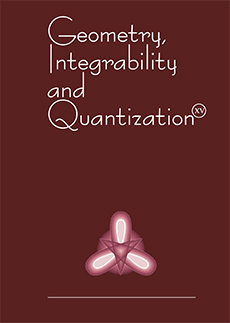Abstract
Here we present a review of the results in the theory of the submanifolds related to the notion of area and mean curvature vector. It is shown that if $r$ is the radius vector of the submanifold $F^n$ in the Euclidean space $E^{n+p}, \rho = \frac{1}{2}r^2$ and $H$ is the corresponding mean curvature vector, then the Laplace-Beltrami operator satisfies $\nabla_2\rho = n(1+ rH)$ and therefore in the case of a minimal submanifold one has $\nabla_2\rho = n$. When $n = 2$ it is proven that if we have a complete submanifold $F^n \subset E^n$ with $|H| \leq H_0 = \text{const}$ and Ricci curvature Ric$(\tau) \geq -a^2 = \text{const}$ in a ball of radius $R$ then $ R \geq \frac{n}{2\sqrt{n-2a} + H_0n}$. The Chern’s problem of existence of a complete and unbounded minimal surface is considered in some depth. Next we consider the conditions of stability of the minimal submanifolds. For submanifolds in Riemannian spaces the problem of stability is connected with the Hopf problem about the existence of metrics with positive curvatures on $S^2 \times S^2$. It is shown that a two-dimensional minimal surface $F^2$ homeomorphic to the sphere $S^2$ in a oriented simply-connected manifold $M^n$ with a sectional curvature $\frac{1}{4} \lt K_a \leq 1$ is non-stable. Pogorelov’s result about minimal surfaces in $S^2 \times S^n, n \gt 2$ is outlined as well. Finally, an expression is derived for the Riemannian tensor of a submanifold defined implicitly by a system of equations in the Euclidean space and a remarkably simple formula is found for the Gaussian curvature of $F^2 \subset E^4$.
Information
Digital Object Identifier: 10.7546/giq-2-2001-7-32


